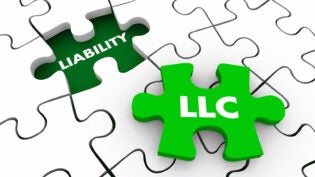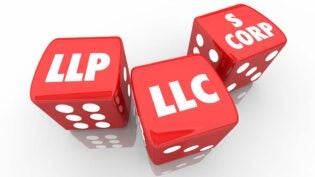
Ask why you need a formal business structure when you start a business and the answers are usually straightforward. For some, it’s a need to separate personal assets from the business; for others, it’s a desire be viewed as a more credible business or to lower overall taxes. This is especially true in places like New York, but even businesses in low-tax states like Texas want to lower their taxes. However, when asked what’s the best business structure for your specific business type, the answers get a little more complex.
Picking the right business structure is a critical, since your choice can impact how you pay your taxes, how much paperwork you need to file, and how you can distribute your profits. All of these questions have legal implications so it’s important to consider professional legal advice as you proceed.
Three of the most common business structures are: the LLC (Limited Liability Company), C Corporation, and S Corporation. Here we’ll cover the general highlights and differences among these three structures, but it’s always wise to talk with a CPA or tax advisor to see what’s appropriate for you particular situation.
The LLC
The LLC has become a very popular choice among small businesses. That’s because it limits the personal liability of the owners, and also requires the least amount of paperwork and legal formalities of the three business structures. Whether you’re in Texas, New York, or Colorado, if you don’t want to deal with holding shareholder meetings and filing meeting minutes, the LLC can be a good choice for you.
Many people prefer forming their own LLC to cut down on the added expense, but this could potentially cost you a lot of time in the long run. Instead, you could opt for an online LLC formation service to speed up and simplify the process. Following our Texas example, this precise guide maps out everything you need to know to start your own LLC in Texas from scratch.
You can structure your LLC to be taxed as an S Corporation where the business doesn’t file its own taxes, but profits and losses are reported on the owners’ personal tax return. This will be covered in more detail below.
The C Corporation
The C Corporation is a general for-profit corporation. It’s a formal business structure that includes shareholders and a board of directors. Corporations must hold regular board of director meetings and an annual shareholder meeting (some of the formalities that are required with the Corp and not the LLC).
The C Corporation is a tax paying entity and files its own taxes each year. Depending on the situation, this can either be advantageous or problematic. In most cases, a corporation is taxed at a lower federal income tax rate than individuals or sole proprietors. So, if your business makes a profit and you keep that money in the corporation, the C Corp could mean lower taxes.
However, if you plan on putting the company profits into your own pocket (in the form of distributions), you may end up paying more in taxes with the C Corporation. That’s because of something called “double taxation” where the company first needs to pay taxes on the profits and then the individual owners need to pay taxes on the distributions. In essence, this means that owners are taxed twice on the company’s profits.
The S Corporation
The S Corporation addresses this “double taxation” problem. An S Corp is a C Corporation that elects “S Corporation” tax treatment to make it a pass-through entity. An S Corporation doesn’t file its own taxes; profits and losses are passed through and reported on each owner’s individual tax return.
To become an S Corp, you’ll need to first form a C Corporation and then file Form 2553 with the IRS. You need to get this paperwork in within 75 days of incorporation, or no more than 75 days from the start of the current tax year.
Not everyone will be able to qualify to be an S Corporation. You can’t have more than 100 shareholders and shareholders must be U.S. citizens or residents. If you don’t meet these requirements, the LLC can be a good alternative.
There’s also one important difference between the LLC and S Corporation that is often overlooked. Both business structures offer pass-through tax treatment, but they differ in how profits are distributed among owners. Let’s say you start a business with a friend and you each own 50% of the business. With the S Corporation, the profits need to be distributed 50-50, while the LLC gives you the flexibility to decide how you want profits to be distributed. For example, if you did more work for the business one year and you both agree that you should get 75% of the profits, that’s possible with the LLC, but not with the S Corp.
Final thoughts
In most cases, a little research will point you in the right direction for which business structure is right for your situation. You can discuss the matter with a CPA or tax advisor and then save money by forming the business online.
Have you considered changing your business structure to better fit your situation?
This was originally written by Nellie Akalp for AllBusiness.com
5654 Views












